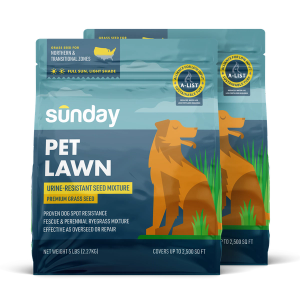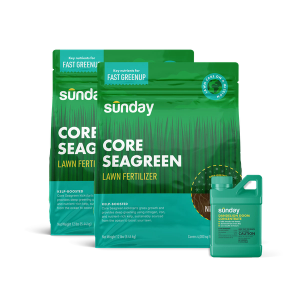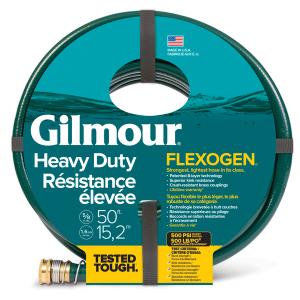What’s a large lawn?
If you’ve got a lawn larger than 13,500 square feet, we’re talking to you! That’s about ⅓ of an acre, or an Olympic swimming pool. Let’s dive in.
Best fertilizer for large lawns
Most of our Sunday customers will receive our liquid nutrient pouches. But for a variety of reasons, this method of application isn’t ideal for large lawns. Let’s take a look at the reasons why granular is the way to go when your square footage is high.
- It provides the right rate of nutrients. The nutrient rate in our liquid fertilizers is optimized for lawns between 500–13,500 square feet. Go any larger than this, and you may notice diminished results.
- It’s more efficient to apply uniformly. Our liquid pouches are applied with a hose. To cover an XL lawn, you may need multiple hoses—and 60–90 minutes of your time. Granular fertilizer—which is applied using a spreader—is a much more efficient use of your time.
- It requires fewer applications. Covering a large lawn with granular fertilizer can still be time-consuming, but with our granular plan you only need to apply 1-2 times per year!
How to fertilize large lawns
Regardless of your square footage, we believe lawns should always be grown in an intentional way. That means not applying products in a brute-force manner, or choosing perfection at the expense of sustainability. Here’s how to apply granular fertilizer to your lawn!
When
Apply every six weeks in the spring and fall, with no more than four total applications per year.
- Only apply to actively growing grass.
- Don’t apply in the summer.
- Don't apply to a wet lawn, or lawns experiencing heat stress or drought.
- Don’t use in conjunction with other fertilizers.
How
Use a broadcast (push) or handheld spreader to apply uniformly across your lawn. Fill your spreader to the top, and apply in straight lines across your lawn to ensure full coverage (at a rate of 3 pounds per 1,000 square feet). Refill spreader as needed to cover lawn entirely. For more details, check out our step-by-step instructions!
Sunday granular fertilizers
Ready to start feeding your large lawn? Take our simple quiz to get your custom lawn plan. This will ensure you get the right combo of fertilizers based on your yard size (of course), as well as your climate and soil. Here’s a sneak peek at what’s inside our granular fertilizers:
- Iron for deep greening
- Kelp as a form of potassium to improve heat tolerance
- Fast-acting nitrogen to kickstart growth
- Slow-release nitrogen for sustained greening
- Potassium for better water management
- Compost and wood ash to add organic matter to the soil
How to sustainably manage a large lawn
Want to grow the lushest lawn on the block? We get it—and we’re all for that! But we’re also here to help you consider the impact of your landscape and grow in the most environmentally conscious way possible. With that mind, here are some tips for caring for a large lawn in a responsible way:
Don't treat it all
Consider only treating part of your lawn to reduce your use of water, fertilizer, and fuel. Choose the area that receives the most attention and traffic—then feed, mow, and water that part.
Go all in on IPM
Rely on Integrated Pest Management (IPM) to treat weeds and pests. Proactive, preventive measures can reduce your need for products to treat problem areas.
- Scout your lawn regularly for problem areas so that you can catch them early (aka, when they’re easier to treat!).
- Hand-pull weeds. This limits your need for spot treatments, which is a great thing to do even if you’re using gentler formulas like ours.
- Mow over weeds. If you’re not up for hand-pulling, another option is to mow 1-2 inches shorter than normal, which will remove up to 65 percent of actively growing weed tissue. Then overseed the area, keep it moist, and mow low again in another week to remove the remaining tissue.
- Reduce pest habitat by dumping standing water, trimming shrubs, clearing yard debris, cleaning gutters, and more.
- Overseed regularly to grow thicker, more resilient grass that crowds out weeds naturally. You can also improve resilience by growing a variety of different species.
Grow alternatives
Consider repurposing unused areas of your lawn. (Looking at you, dark corner of the yard where no one ever goes!) You can turn these areas into a pollinator garden, bird sanctuary, wildlife habitat, rain garden, xeriscape, hardscape—the options are endless!
Check your water
Audit your irrigation system regularly. Since large lawns require more water, you want to make sure your irrigation is as efficient as possible!














